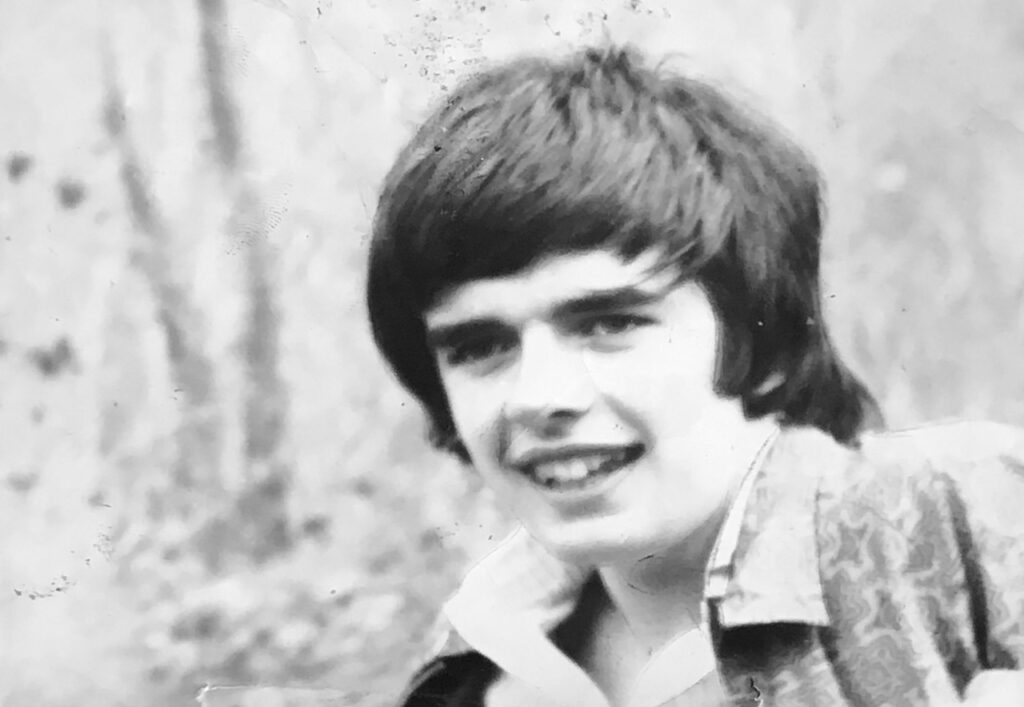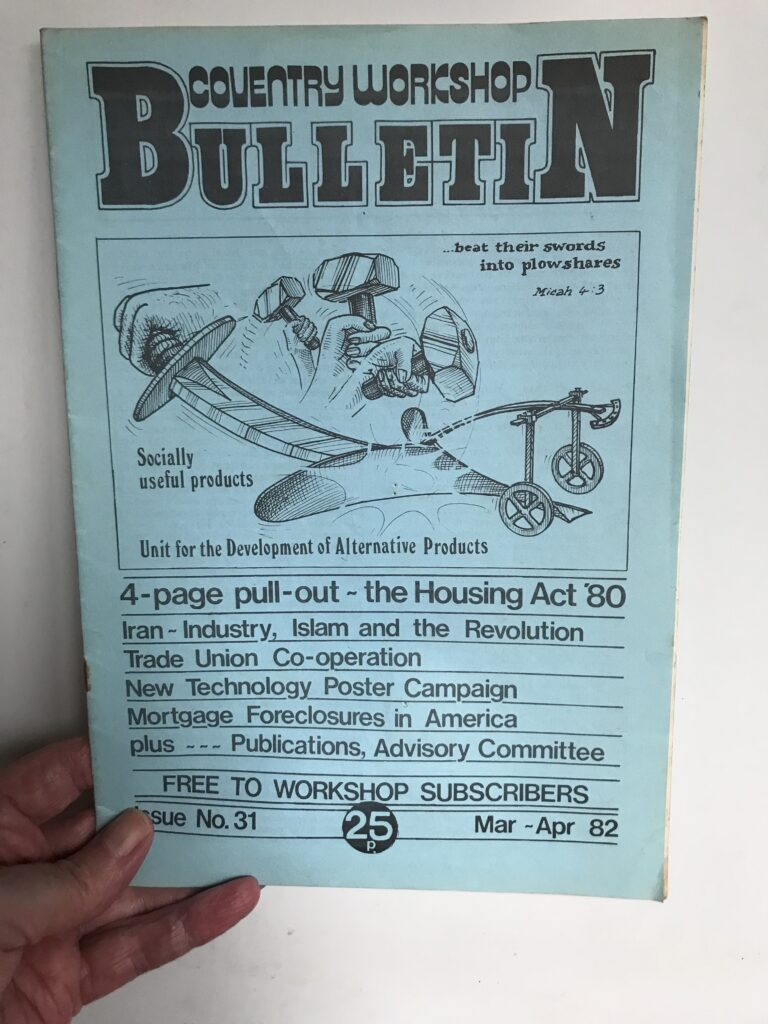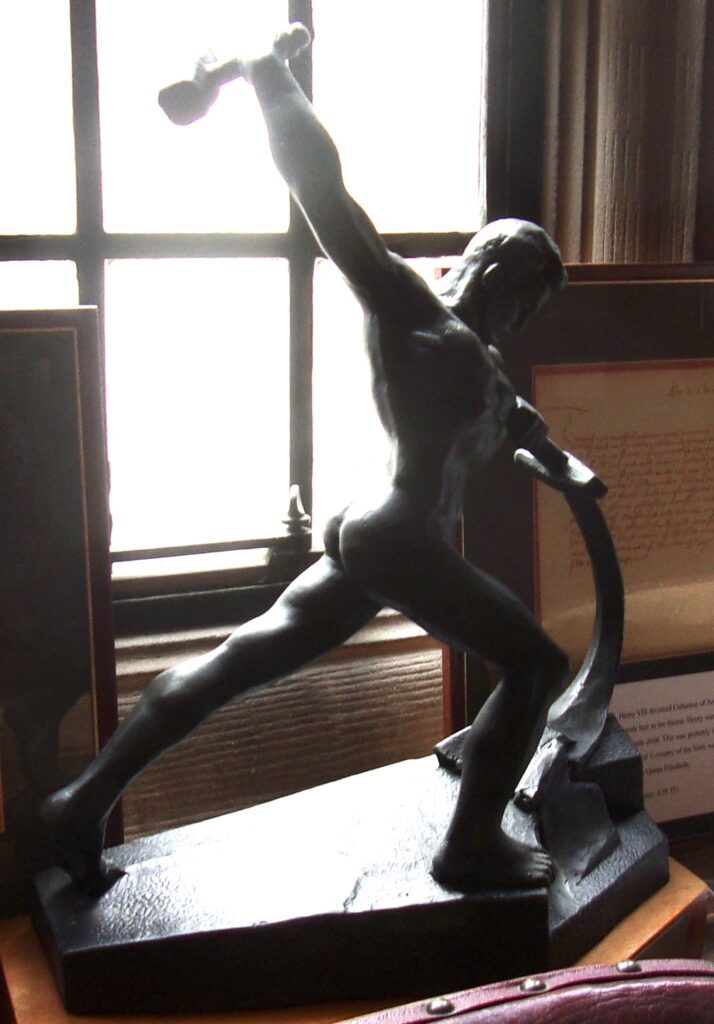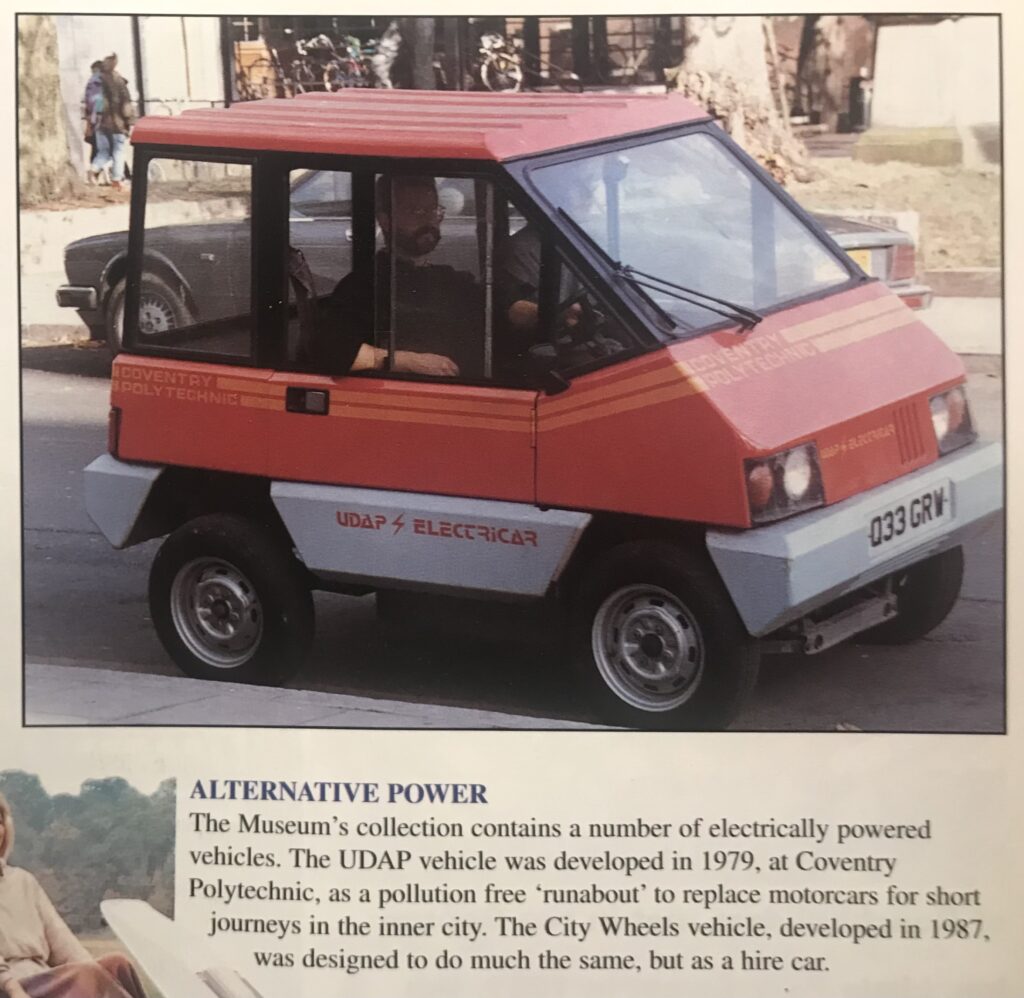
Coventry Society Founder member, Paul Maddocks, looks back at Coventry’s history of innovation in the Seventies and eighties with special reference to UDAP
Introduction:
Coventry in the 1970s and 1980s was a city of change — heavy industry was shrinking, communities were under pressure, yet creativity and social activism flourished. In this blog post, I look back at my own experience as a young designer involved with grassroots projects. From trade union newsletters to the pioneering Unit for the Development of Alternative Products (UDAP), this is a personal memoir of how local people worked to reinvent industry for the common good.
Beginnings in Hillfields
In the late 1970s and early 1980s, just after I got married, I began taking on small design jobs for campaign groups and trade union publications. Most of the work involved designing covers and artwork — and while it paid only a few coins, it opened the door to a world of innovative ideas and social projects.
It all began in Hillfields, Coventry. I would often stop by the Hillfields Information Centre on Primrose Hill Street, which housed a litho printing press bought with proceeds from a book about Warwick University. That book had exposed the university’s secret files on students during an occupation of its administration building — and rather than keeping the royalties, the author used them to buy the press. Over the years, the press moved several times — from Hillfields to Wheatley Street School, and later to Spon End in the old Coventry Chain Factory — but for me it was the place where creative activism came alive.
At the time, I earned about 50p for every front page or poster I designed, which was very welcome as my family was just starting out. One of my regular gigs was designing the cover of the Coventry Workshop Bulletin, based at 40 Binley Road, opposite Gosford Green. I would visit their office, chat with staff about the main stories, and then go home to transform their ideas into visuals — usually overnight, ready for printing the next day.
Designing for UDAP
One of my favourite covers featured an article about the Unit for the Development of Alternative Products (UDAP). The idea behind UDAP was powerful: to create socially useful products, provide new jobs, and move away from the arms trade and environmentally harmful manufacturing.

For the cover, I wanted a striking image. I remembered a Biblical phrase about turning swords into ploughshares but couldn’t recall the exact source. I phoned Canon Stuart Hudson of Willenhall St. John the Divine Church, who kindly looked it up for me: Micah 4:3 — “…beat their swords into ploughshares.” Inspired, I drew an image of a hammer striking a sword, transforming it into a plough.
That quote has stayed with me ever since. One of my favourite representations of it is a statue gifted by Russia to Coventry, now displayed on a windowsill in the Council House outside the main chamber.

The Lucas Plan and Socially Useful Work
UDAP grew out of the ideas of the Lucas Aerospace Combine Shop Stewards Committee. In the mid-1970s, facing the decline of military contracts, the committee argued that skilled workers should not be made redundant but instead be supported to design and manufacture socially useful products.
This was a radical approach at a time of high unemployment and deep cuts in public spending. Instead of pouring money into redundancy payments and unemployment benefits, the Lucas Plan proposed channelling workers’ expertise into projects that benefited society.
Some of the projects UDAP explored included:
- Alternative Transport Projects — such as the UDAP electric car (now on display at the Coventry Transport Museum), a hybrid vehicle, a road-and-rail bus, and an auxiliary braking system.
- Alternative Energy Projects — including wind power designs, heat pump systems, energy-saving devices, and universal power packs.
- Alternative Medical Projects — such as portable kidney machines and aids for the disabled.

Setting Up UDAP
UDAP was officially established in 1979 at Coventry (Lanchester) Polytechnic, thanks to an initiative by the Lucas Aerospace Combine Shop Stewards Committee. Funding came from the Barrow and Geraldine Cadbury Trust, with additional support from the West Midlands County Council for three years.
The unit became part of the Department of Combined Engineering within the Faculty of Engineering. It moved into the basement and ground floor of Cope Street — once the art college darkroom where I had studied — before the college relocated to Cox Street and the Graham Sutherland building (now the Delia Derbyshire building).
I visited UDAP many times to see their latest projects. One of the last I recall was a conveyor belt system using magnets to sort steel and aluminium cans — a project for CROW (Coventry Recycling of Waste), long before recycling became mainstream.
A City of Invention
Coventry has always been a city of invention, engineering, and creative ideas. While much of our manufacturing base has been lost, initiatives like UDAP showed what was possible when communities, universities, and workers joined forces to solve social problems. My hope is that Coventry’s two universities can continue to nurture this inventive spirit for future generations.
Paul Maddocks, September 2025
